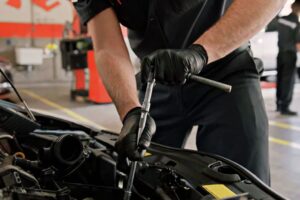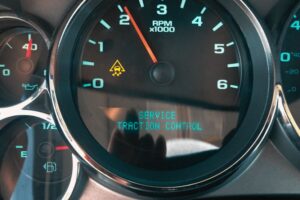The job of a fuel pump relay is to see to it that the right amount of fuel is supplied to the engine so it can run efficiently. If it’s not working, you won’t be able to start your car. This article will show you how a fuel pump relay works and the signs of a bad relay.
Once the fuel pump relay has done its job and the engine is running, it shuts off right away. It is now the oil pressure sending unit that supplies the electricity that powers the fuel pump. And when you turn off the ignition, you will engage the fuel pump relay again, long enough so that the fuel pump can be powered down and shut off.
As you turn the key on the ignition, the fuel pump relay activates the fuel pump to develop pressure in the fuel system. If this relay starts to fail, you will notice that the engine’s performance will deteriorate over time. It will be incapable of energizing the fuel pump. This can lead to engine stalling because it can’t get the right amount of fuel to ignite.
Read on to learn more about how a fuel pump relay works and the signs that will show if it is beginning to fail.
How a Fuel Pump Relay Works

Critical Component of Your Car
The fuel pump relay is a critical component of your car, particularly when you need to start its engine. When you have already started the engine, this fuel pump relay turns off. It is now the job of the oil pressure sending unit to supply the electricity that will power the fuel pump.
Activates the Fuel Pump
When you shut off the ignition once more, this fuel pump relay turns on again, just long enough so the fuel pump can power down and shut off. This relay also activates the fuel pump so the fuel system can be pressurized as you turn your car key.
Effects of a Faulty Fuel Pump Relay
If this relay is not working properly, you will notice that the performance of your engine will deteriorate over time.
This happens because the capacity of the relay in energizing the fuel pump will decrease. If not corrected, it can lead to engine stalling since it cannot supply the correct amount of fuel required for combustion.
Signs of a Failing Fuel Pump Relay
You don’t have to let matters reach this far. You will see many signs if you have a failing fuel pump relay, including:
- Sudden car stalling,
- Dead battery,
- Hard starting.
What Is a Fuel Pump Relay?
Directs or Relays Electrical Current to the Fuel Pump
The fuel pump relay is like an automotive fuse, an electrical device. It directs or relays electrical current to the fuel pump. Its main job is to ensure that the fuel pump receives enough electricity to operate efficiently.
Requires a Lot of Electrical Energy to Operate
The fuel pump requires a lot of electrical energy to operate. The fuel pump relay sees to it that only the right amount of power is supplied so that the wiring system of the fuel pump will not overheat and burn.
Fuel Pump Relay’s Location
The fuel pump relay location is underneath the hood and fastened to the firewall in nearly all vehicles. Typically, this relay is housed in a small plastic black box. It has a wiring harness plugged at its bottom.
Monitor the Power Being Supplied to the Fuel Pump
The main job of this relay is to monitor the power being supplied to the fuel pump. It activates the fuel pump as you turn the ignition on and then turns off the pump when you turn off the engine.
How to Determine If the Fuel Pump Relay Is Working Properly
Humming Noise Upon Turning on the Ignition
When you turn on the ignition, you should hear a humming noise. The fuel pump relay produces that sound. If you don’t hear this sound, it could indicate that the relay is no longer working. Your car will stall since its engine will not receive fuel.
Requires Electricity to Pump Fuel Into the Engine’s Combustion Chambers
The fuel pump requires electricity to pump fuel into the engine’s combustion chambers. An oil pressure device supplies this electricity to the engine. The fuel pump cannot supply fuel to the engine until oil pressure is created, which will provide electricity to operate the fuel pump.
Engine Control Unit (ECU) Triggers the Fuel Pump Relay
The short period before the engine starts to run is when the fuel relay pump is triggered. The car component that does the triggering is its computer or Engine Control Unit (ECU). So, the fuel pump relay turns on whenever you turn on the ignition.
Maintain the Right Voltage Supply to the Fuel Pump
In addition, the basic function of this relay is to maintain the right voltage supply to the fuel pump. When this relay turns on, it will supply the right amount of current to the fuel pump so it can do its work.
Difficulty Starting Your Car
Since it is a part of the fuel pump’s control system, if the fuel pump relay fails, you will have a problem starting your car. Once it fails, the engine management system of your car will record this event.
Signs of a Bad Fuel Pump Relay
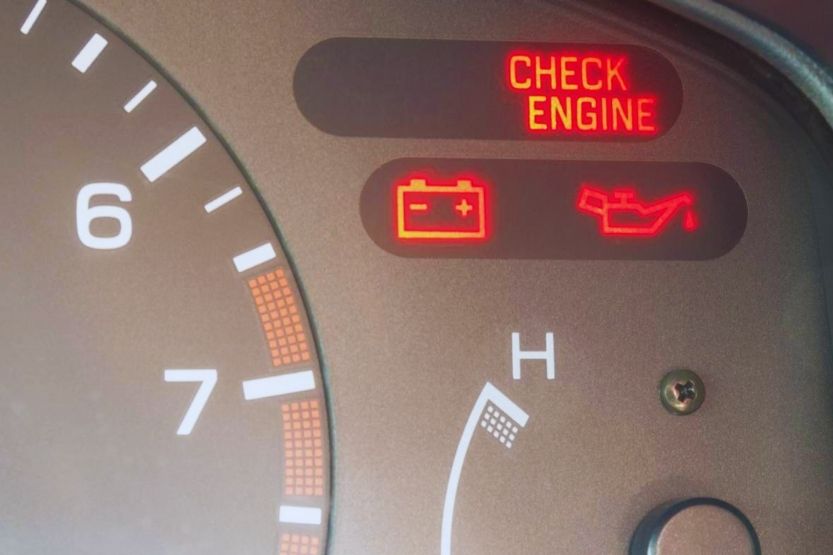
Your car will not leave you hanging. It will communicate with you whenever one of its parts is not working properly. There are many signs of a bad fuel pump relay before it goes bad.
Here are some of these signs:
1. Engine Stalling
Engine stalling is one of the first symptoms of a failing fuel pump relay. If it’s not working properly, fuel cannot be supplied to the engine’s combustion chambers. If combustion does not occur, the engine will stop running, and your car will stop.
This relay can also overheat, resulting in a short circuit of the electrical contacts inside it. If this happens, the flow of electricity will stop. However, when the relay cools down, the flow of electricity will resume. If this is the case, you will experience intermittent car starting problems.
2. Check Engine Light
One of the basic signs of a failing fuel pump relay is your instrument cluster’s illuminated check engine light. When this happens, the ECU gets some trouble codes. You need to hook up an OBD 2 scanner to find the exact problem.
If the scanner indicates a P0230 or P0231, there is a problem with the primary circuit of the fuel pump. The P0231 code means Fuel Pump Secondary Circuit Low Voltage. This means that the voltage readings from the fuel pump relay going to the ECU are below the required specifications.
However, this code reading does not explicitly say that it is the fault of the fuel pump relay. The probable cause could also be a shorted fuel pump, a blown circuit, frayed wiring, or a blown fuse.
3. Engine Can’t Start
If the fuel pump relay is defective, you cannot start your engine. There’s no fuel being supplied to the engine’s cylinders, so there’ll be no combustion that will take place. Consequently, there is nothing that will make the engine run.
4. No Sound When You Switch the Car Key
When you switch the ignition, you should hear a low hum noise from the engine. That is the sound coming from the fuel pump. If there is no such sound, the fuel pump relay is not working. It is the fuel pump relay that makes the fuel pump run. So, it can mean the fuel pump relay is not working.
5. Car Takes Too Long to Start
If you find yourself cranking the engine several times before it can start, it also indicates a fuel pump relay going bad. Taking more than 10 seconds to start the engine is already too long. This could easily drain the juices of your battery.
6. High Mileage
Fuel pump relays are designed to last long. Their average lifespan is about 100,000 to 200,000 miles. So if you have an old car with this kind of high mileage, most of its components, including the fuel pump relay, are probably running that elevated kind of mileage also.
So, if your car is intermittently stalling, look into this area. It may be that the fuel pump relay of your car is starting to fail because of old age.
7. Bad Idling and Weak Acceleration
Aside from engine stalling, if the fuel relay pump is already malfunctioning, you will also experience bad idling and weak acceleration. These issues are related to the fuel system. So, you need to check the components of the fuel system, including the fuel pump relay.
Again, how does a fuel pump relay work? The fuel pump relay is a plastic box with a wiring harness at the bottom. It monitors the power proceeding to the fuel pump. Also, it activates and deactivates the fuel pump.
How to Troubleshoot Failing Fuel Pump Relay
From what we have discussed above, you now know that there are many symptoms of a failing fuel pump relay. These symptoms are connected to your car’s particular component or system.
So, to get to the source of the problem, you have to check the component or part that manifested the symptom.
General Approach to Troubleshooting
When tracing the source of the problem, always begin by making a visual inspection. Here are some suggestions on how you can do this:
- Remove the fuel pump relay and examine it visually. Then, check the socket and the terminals. Look for signs of overheating or corrosion since overheating and corrosion prevent current flow.
- Use an electrical contact cleaner to clean the corroded socket and terminals.
- Check all fuses before deciding to repair any potential problem.
The fuel pump relay is a relatively simple electrical device. It does not contain a lot of components. The usual components that break or wear down are the coil and the contacts.
So, when one of these two parts starts to fail, the current will not flow. If this relay fails, the fuel pump will not function properly.
How to Test the Relay
Here is a way to test the functionality of a fuel pump relay:
- If the fuel pump relay is suspect, swap it with a good one.
- Find another relay in your car with the same style. An example is the relay of the cooling fan. Just be sure that the two relays are configured in the same way.
- Remove the suspect relay, and install the good one in its place.
- Now, check if your car will start.
- If the engine starts, buy a new relay of the same type and configuration and install it. Re-install the other good relay where it originally was installed.
Step-by-Step Process of Testing Your Car’s Fuel Pump Relay

If your car has stalled while you are driving, and you suspect that it is the fault of a fuel pump relay, here is a complete process of validating your suspicion:
1. Park Your Car on Level Ground
Move your car to a level ground away from road traffic. Engage the parking brake and put the transmission in the park or neutral. If you can get your car into a garage, it’s a better place to do the check and repair work.
2. Turn Your Car Key to the ‘On’ Position Without Starting the Engine
Listen for the activation of the fuel pump as you turn the key. This is why you need to get your car away from the traffic so that there’ll be no other ambient sounds that can muffle the sound of the fuel pump.
If it’s difficult to hear the sound of the fuel pump in your car, you have to go to the next step.
3. Raise the Hood and Find the Fuel Pump Relay
The fuel pump relay is located in the big fuse box inside the engine compartment in almost all vehicles. Remove the cover of the box and look at the diagram. Check the wiring diagram to find the relay.
If you can’t find it or the fuse box doesn’t have any diagram, you can try looking at the operator’s manual.
4. Check the Engine Bay for Clicking Sound
If still you can’t hear the sound of the relay inside the vehicle, even with the hood opened, ask a friend to check the engine bay and listen to the buzzing or clicking sound. You need to be sure if it’s the one.
5. Disconnect the Negative Cable from the Battery
Get a socket wrench the size of the nut of the battery cable. Use it to disconnect the negative cable from the battery. This will disable the flow of electricity to the fuel pump and the connected circuits.
6. Remove the Fuel Pump Relay
The fuel pump relay can be easily removed by hand. If you can’t remove it, use a pair of needle-nose plyers to pry it out from its place.
7. Test the Relay Using a Multimeter
Get a multi-tester or multimeter and test the pins of the relay. There are four pins on the relay, one for the input voltage, one for the load (the one directly connected to the fuel pump’s wiring), one for the ground, and one for the battery.
Get the multimeter’s probes, connect them to the battery, and load the pins of the relay. To supply power to the fuel pump relay, you need to use a 12-volt voltage regulator or 12-volt power supply. Connect the ground pin of the relay to the ground of the power supply.
8. Supply Power to the Input Voltage Pin
Each time you connect the power supply to the input voltage, you should hear a beep from the multimeter. This will indicate continuity. The fuel pump relay may be burned out, busted, or broken if it doesn’t show any continuity.
9. Replace the Failed Fuel Pump
Buy the same fuel pump relay as the broken one in your car. Install it where the original relay was when you removed it. After installing the relay, put back the cover of the fuse box.
You’re now ready to start the car to see if you have fixed the problem. But before doing that, open the fuel cover of the fuel tank and remove the fuel cap. Then put the fuel cap back on. Make sure that you have made a tight and perfect seal.
Start your car. You will hear a low hum from the engine bay if everything goes well. The fuel pump is working fine again. Take your car for a test drive. Pay attention to your dashboard and see if the engine light turns on. If it does not, you have corrected the fuel pump relay problem.
Frequently Asked Questions
Here are some of the answers to the often asked questions about the importance of the fuel pump relay and how it affects the running of a car engine:
How Does a Fuel Pump Relay Work?
Once you have started your engine, the fuel pump relays turn off. In this instance, the electricity that will make the fuel pump run will be supplied by the oil pressure sending unit.
And when you shut off the ignition again, the fuel pump relay will also turn on, just long enough so it can power down and turn off the fuel pump.
What Are the Signs of a Bad Fuel Pump Relay?
Fuel pump relay symptoms are many. Here are some of them:
- Engine stalling
- The engine can’t start
- The car takes too long to start
- Check engine light
- Bad idling and weak acceleration
How Can You Test a Fuel Pump Relay If It Is Working?
Here is a simple method of testing the relay:
- Park your car in a safe place with level ground
- Turn the ignition in the ‘On’ position but don’t start the car yet
- Lift the hood and try to find the relay in the engine bay
- The car part that emits a buzzing or clicking sound when the key is turned on is the fuel pump relay.
- Now, get a multi-tester and test the continuity of the relay pins. If there’s no continuity, replace it with a new one. If there’s continuity, the problem is not caused by the fuel pump relay. You have to continue checking.
In Closing: How Does A Fuel Pump Relay Work?
The fuel pump relay is an essential component of your car because it determines the correct amount of fuel supplied to the engine to operate efficiently. This relay shuts off when the engine is running.
It is now the job of the oil pressure sending unit to supply the electricity that will power the fuel pump. The fuel pump will engage again when you turn off the engine, only long enough to power down and shut off the fuel pump.
Read next:

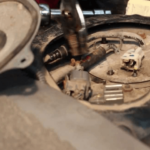
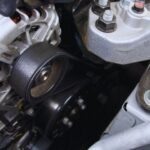
![Driving With a Bad Purge Valve [What Happens? Signs and Symptoms] driving with a bad purge valve](https://roadsumo.com/wp-content/uploads/2022/02/driving-with-a-bad-purge-valve-150x150.jpg)
![Transmission Fluid Pump [10 Best Pumps] transmission fluid pump](https://roadsumo.com/wp-content/uploads/2021/07/transmission-fluid-pump-150x150.jpg)

![Costco Tire Warranty [How It Works and What It Covers] Costco Tire warranty](https://roadsumo.com/wp-content/uploads/2021/05/Costco-tire-warranty-150x150.png)
